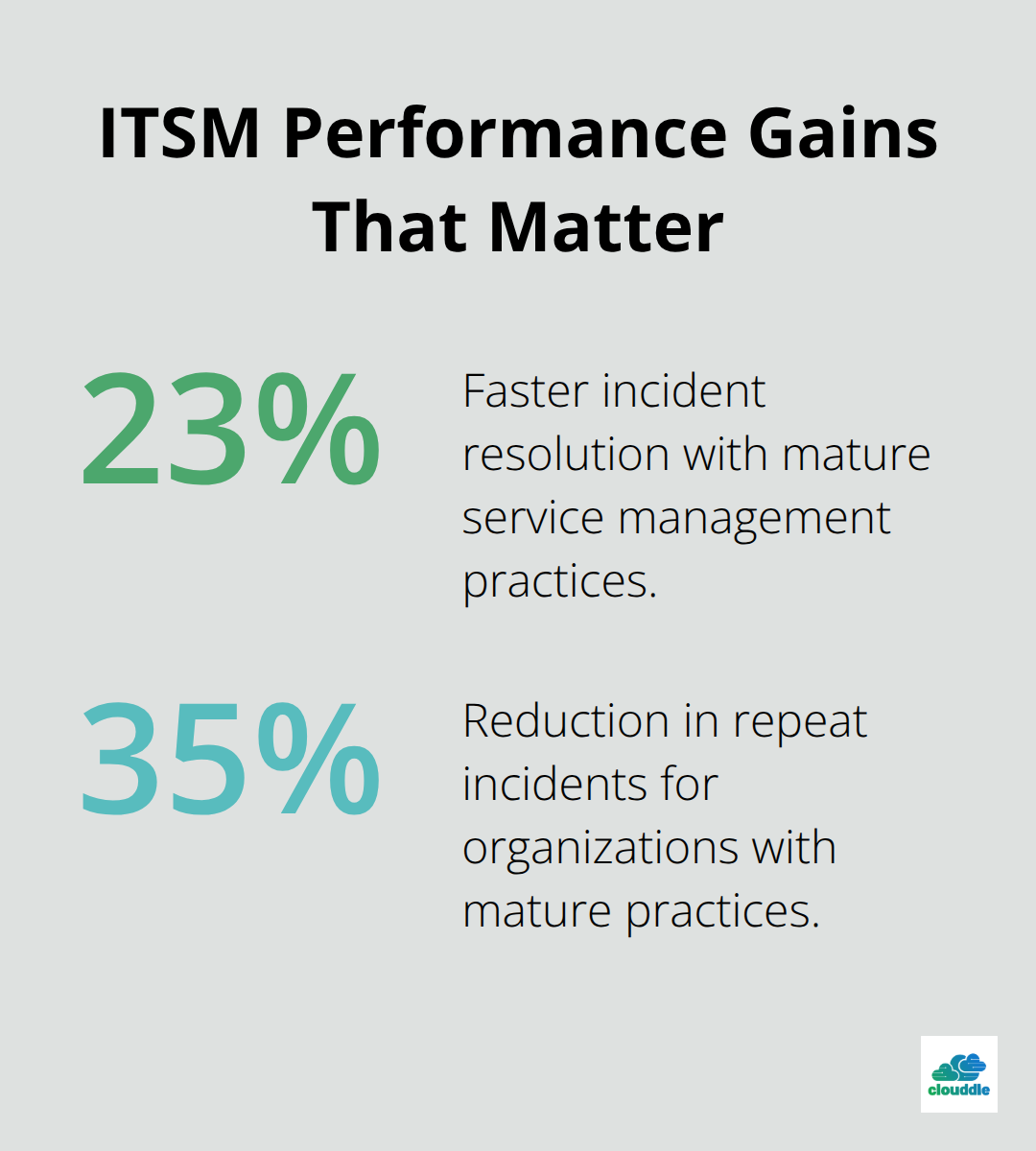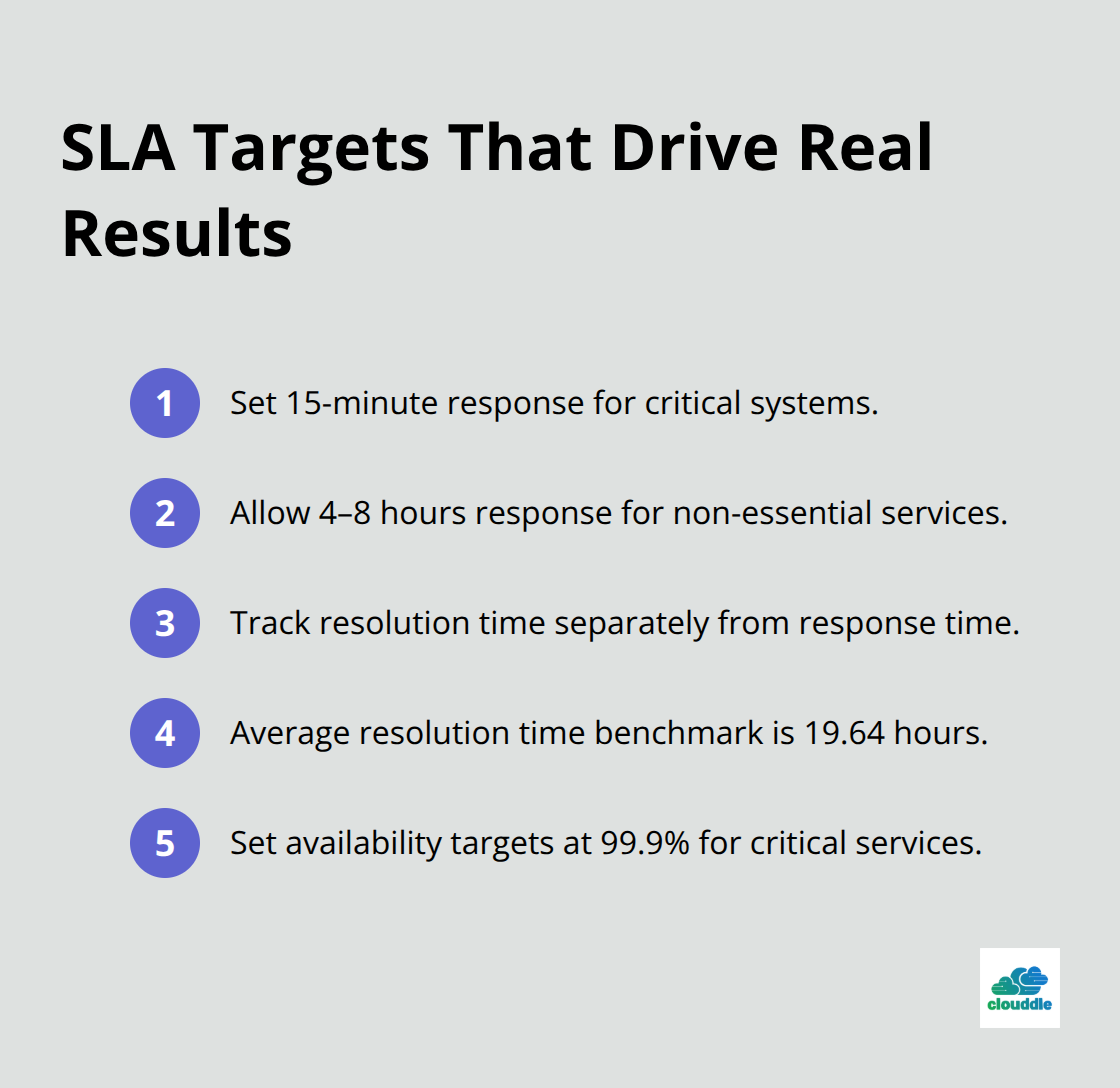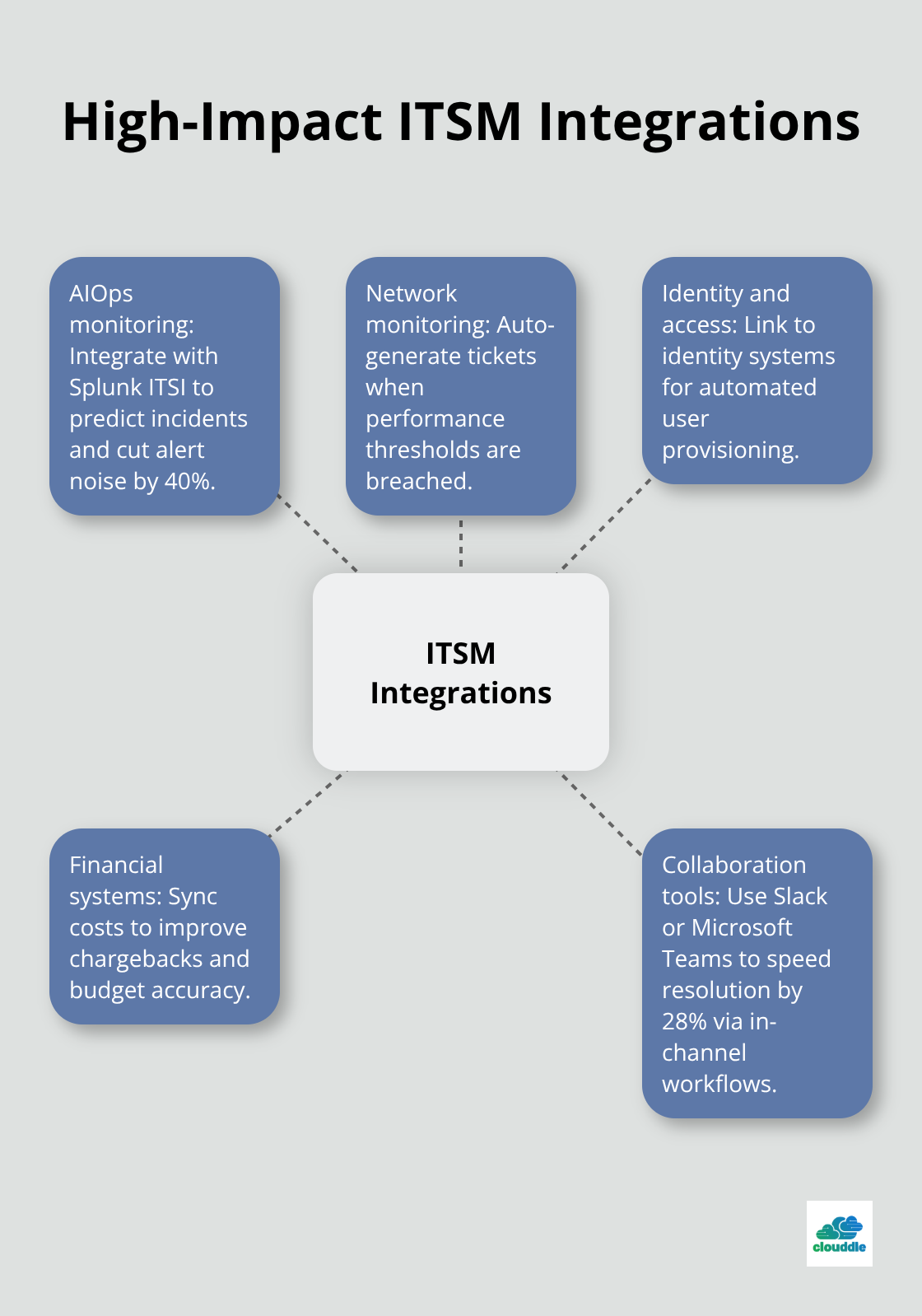IT service management and delivery has become the backbone of successful organizations worldwide. Companies with mature ITSM practices report 40% fewer service disruptions and 25% higher customer satisfaction rates.
We at Clouddle see businesses struggle daily with reactive IT approaches that drain resources and frustrate users. The shift from break-fix mentality to proactive service delivery transforms entire organizations.
This guide provides actionable strategies to build world-class IT service management that drives real business value.
What Makes ITSM Different From Basic IT Support
ITSM transforms IT from a reactive cost center into a strategic business enabler through structured frameworks and measurable outcomes. The ITIL 4 framework, which more than 90% of Fortune 500 organizations use, centers on five core practices: incident management, problem management, change management, service level management, and continual service improvement. These components work together to create predictable service delivery that aligns with business objectives rather than simply fixes broken systems.
The Strategic Shift From Operations to Service Management
Traditional IT operations focus on system maintenance, while ITSM prioritizes value delivery to end users and business stakeholders. ServiceNow research shows organizations with mature service management practices achieve 23% faster incident resolution and reduce repeat incidents by 35%. This shift requires a move from reactive firefighting to proactive service design, where every IT decision connects directly to business outcomes and customer satisfaction metrics.

Quantifiable ITSM Return on Investment
Forrester studies reveal that companies with comprehensive ITSM frameworks see average ROI of 162% within three years. The financial impact comes from reduced downtime costs (which can average $427 per minute for smaller businesses), improved staff productivity through automated workflows, and enhanced customer retention through better service quality. Organizations typically recover their ITSM investment within 18 months through operational efficiency gains and reduced manual intervention requirements.
Service Level Agreements Drive Accountability
Effective ITSM establishes clear performance standards through well-defined SLAs that set expectations for response times, resolution targets, and service availability. These agreements create transparency between IT teams and business users while providing measurable benchmarks for service quality. The next chapter explores how to implement these agreements and build the processes that support consistent service delivery.
How to Build Service Delivery That Actually Works
Set Performance Standards That Drive Results
Effective service delivery starts with SLAs that reflect real business needs rather than generic industry benchmarks. HDI research shows organizations with customized SLAs achieve 31% better first-call resolution rates compared to those using standard templates. Define response times based on business impact: critical systems require 15-minute response times, while non-essential services can wait 4-8 hours. Track resolution time separately from response time, as Freshservice data indicates the average resolution time across industries is 19.64 hours.

Set availability targets at 99.9% for critical services and measure actual uptime monthly rather than annually.
Build Incident Management That Prevents Escalation
Modern incident management focuses on prevention rather than quick fixes. Implement automated ticket routing based on keywords and service categories, which can reduce first assign time by up to 15% according to machine learning studies. Create escalation matrices with clear handoff procedures: Level 1 support handles password resets and basic issues within 2 hours, Level 2 addresses system configurations within 8 hours, and Level 3 manages complex integrations within 24 hours. Conduct root cause analysis after every major incident, as organizations that practice blameless post-mortems reduce repeat issues by 45%.
Deploy Self-Service That Users Actually Use
Self-service portals succeed when they solve the most common user requests without IT intervention. Build knowledge bases with step-by-step screenshots for the top 20 user requests (which typically account for 80% of all tickets). Create automated workflows for standard requests like new user onboarding, which should complete within 30 minutes without manual intervention. The most effective portals integrate with existing business systems and allow users to track request status in real-time.
Monitor Performance Through Data-Driven Metrics
Track metrics that matter to business outcomes rather than vanity numbers. Focus on first contact resolution rates, which should exceed 70% for mature service desks. Monitor average resolution time by ticket category and identify patterns that indicate process gaps. Customer satisfaction scores provide direct feedback on service quality-organizations using Freshservice report CSAT ratings of 97.4% in recent benchmarks. These metrics reveal which processes need attention and guide resource allocation decisions.
The foundation of strong service delivery requires the right cloud computing infrastructure to support these processes and scale with business growth.
Which ITSM Platform Delivers Real Results
The right ITSM platform determines whether your service delivery succeeds or becomes expensive software shelf-ware. Atlassian was named a Leader in the 2024 IDC MarketScape for ITSM Software for strengths in platform benefits, automation and AI offering, and scalability, while ServiceNow ranked No. 1 in six segments in Gartner® Market Share, 2024, but requires significant customization investment. Freshservice achieves the highest customer satisfaction ratings at 97.4% CSAT because of its intuitive interface and rapid deployment capabilities.
The platform choice should align with your organization size and technical complexity. Companies under 500 employees benefit most from cloud-native solutions like Freshservice or Zendesk, while enterprises above 5,000 users need ServiceNow’s advanced workflow capabilities despite higher implementation costs.
Integration Strategy That Actually Works
Modern ITSM platforms must integrate seamlessly with monitoring tools like Splunk ITSI, which uses AIOps to predict incidents and reduce alert noise by 40%. Connect your ITSM platform directly to network monitoring systems to create automated ticket generation when performance thresholds breach predefined limits.

The most effective setups link ITSM tools with identity management systems for automated user provisioning and with financial systems for accurate cost tracking. Slack and Microsoft Teams integrations increase ticket resolution speed by 28% according to Atlassian data, as technicians can collaborate without switching between applications.
Cloud Platforms Win the Performance Battle
Cloud-based ITSM solutions outperform on-premises deployments in every meaningful metric except data control. Cloud platforms deploy 85% faster than on-premises alternatives and automatically scale during peak demand periods without manual intervention.
The total cost of ownership favors cloud solutions by 43% over three years when factoring in infrastructure, maintenance, and upgrade costs (including hardware refresh cycles and staff training). Organizations concerned about data sovereignty should evaluate hybrid deployments, but pure cloud solutions provide better disaster recovery capabilities and eliminate the need for dedicated IT infrastructure management.
Platform Selection Criteria That Matter
Evaluate ITSM platforms based on deployment speed, user adoption rates, and integration capabilities rather than feature lists. Test each platform with your actual workflows during trial periods to identify gaps between vendor promises and real-world performance. Consider the vendor’s roadmap alignment with your business growth plans and their track record for customer support responsiveness during critical incidents.
Final Thoughts
IT service management and delivery transformation demands a systematic approach that places business value above technical complexity. Start with ITIL 4 framework components and implement them gradually, with incident management first to achieve quick wins that demonstrate ROI within the first quarter. Establish baseline metrics for response times, resolution rates, and customer satisfaction before you make process changes, as this data forms the foundation for improvement measurement.
Success in modern ITSM requires continuous measurement and adaptation. Track first contact resolution rates monthly and try to reach the industry benchmark of 70% or higher. Monitor your CSAT scores against the Freshservice benchmark of 97.4% and investigate any scores below 90%. Review SLA compliance quarterly and adjust targets based on actual business impact rather than arbitrary industry standards (which often fail to reflect real operational needs).
Service-oriented culture development requires leadership commitment and staff training on customer empathy alongside technical skills. Organizations that invest in communication training for IT staff see 23% faster incident resolution and higher user satisfaction. We at Clouddle provide the infrastructure foundation that supports successful ITSM practices through our managed IT services with flexible solutions that scale with business growth.


